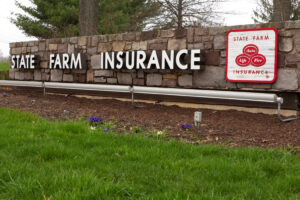
State Farm expands calibration requirements with OPUS nationwide
By onAnnouncements
State Farm announced a national rollout of ADAS MAP requirement for Select Service repair facilities Tuesday, having successfully completed their regional pilot program, according to an email it sent the facilities.
It announced the program, based on an agreement with OPUS IVS, in October for Colorado and Michigan. An email sent to Select Service repair facilities in February expanded the program to Illinois, Indiana, Missouri, and Wisconsin.
In the April 15th email, State Farm claims, “this initiative underscores our ongoing commitment to help our collision customers identify ADAS calibrations needed for safer, higher-quality repairs.”
The Insurer said they rolled out the program with OPUS IVS as the preferred provider to supply Select Service repair facilities with accurate information on which type of calibration operations are necessary based on estimated vehicle repairs.
“State Farm will require the use of ADAS MAP, an ADAS calibration software system for vehicles requiring calibration,” State Farm says in its recent email. “The Opus IVS software scrubs estimates and/or repair orders and identifies VIN-specific ADAS systems, necessary calibrations and provides OE repair procedures.”
It is unclear from the communication if State Farm will require it’s own field appraisal team to use ADAS Map in internal damage assessments and estimating processes.
The email states that Opus IVS would reach out to repair facilities to arrange access to ADAS Map, the ADAS calibration software system for use on Select Service repairs.
Select Service facilities are required to utilize the specific calibration software on all repairs, including total losses, the email says.
The repair facilities will incur a $3 charge per VIN when an estimate is run through ADAS MAP.
“This charge represents a 40% discount on the retail price of $5 per VIN,” the email says. “This operating expense should not be passed on to State Farm or our customers.”
According to the email, facilities are free to choose their diagnostic tool and remote service provider; however, the amount billed for the calibration should not exceed the price State Farm would have paid per the part code table that it has established.
It adds that State Farm has identified local mobile/car-side service providers that will perform the calibrations at State Farm’s part code table pricing. It directs repair facilities to Opus landing page as a way to find mobile/car-side providers.
State Farm directs shops to download the part code table pricing at CCC.
Colorado shops have said they’ve seen an uptick in short payments for calibrations from State Farm since the pilot started in their state.
Megan Mueller, co-owner and CEO of Ozzie’s Body Shop in Loveland, Colorado, previously told Repairer Driven News, that her company was excited about the announcement of the pilot program because costs quoted in State Farm announcements are higher than what her shop has previously been paid.
However, she later learned the prices given to Select Service shops would not be honored for shops that are not in the network, such as Ozzie’s Body Shop.
Mueller said State Farm also recently changed how it covers calibrations. The company is now telling her they will only approve amounts quoted by two aftermarket calibration companies. The companies will come on-site and use the space provided within her shop or on their lot.
Michael Arellano, general manager of Rickenbaugh Collision Center East in Aurora, Colorado, said State Farm isn’t requiring his shop to use specific calibration companies but has seen a change in how the insurance company is covering calibrations since the pilot started, such as providing supplements based on nearby dealership pricing.
“When they called the dealership, they gave the wrong wording and got the wrong pricing,” Arellano said. “We called the dealership and were able to get the right pricing.”
Arellano said there have been multiple situations where State Farm repeatedly sends supplements below the cost of doing the calibration.
The supplements are nearly 50% below the costs State Farm uses in announcements to Select Service shops for the pilot program, he said.
Rick Elsinger, owner of Aurora Collision Center, said the prices offered by State Farm are not enough to provide a markup on any services.
He also has noticed that he’s getting pushback on doing certain collision procedures.
“They didn’t want to pay for a calibration on a rear-end collision but the GM position statement says all collisions,” Elsinger said.
The customer ended up covering half of the cost for the calibration, he said.
Insurance Business reported in March that State Farm feedback was ignored as the Montana Senate voted 49-1 to pass a new insurance bill.
Sen. Barry Usher (R-19), bill sponsor, told the Senate during a second reading of the bill Saturday, that it is about safety inspections.
“There are standards that manufacturers have,” Usher said. He said this includes safety inspections on seatbelts and airbags following a collision.
Usher said some insurance companies are fighting OEM procedures that include safety inspections.
“This [bill] gets them in line and guarantees more safety for the consumers,” Usher said.
During the Montana Senate Business, Labor and Economic Affairs Committee hearing leading up to the Senate vote, Greg Van Horssen, a State Farm representative, said that the insurance industry and repairers want to return a vehicle to its pre-accident condition.
“We have an obligation to return a car to its pre-accident condition, and we try to do that as cheaply and as reasonably as possible,” Van Horssen said. “Any time the cost of repair goes up, so does your insurance premiums, and you know what your insurance premiums are doing in the past five years or so.”
Van Horssen specifically spoke in opposition to position statements, general checklists or safety inspection checklists because “They are in the manufacturer’s book. These are not repair procedures. They are suggestions, and we think this bill would require us to follow that, and we believe that it would result in an astronomical increase to your insurance premiums.”
IMAGE
Photo courtesy of youngvet/iStock
